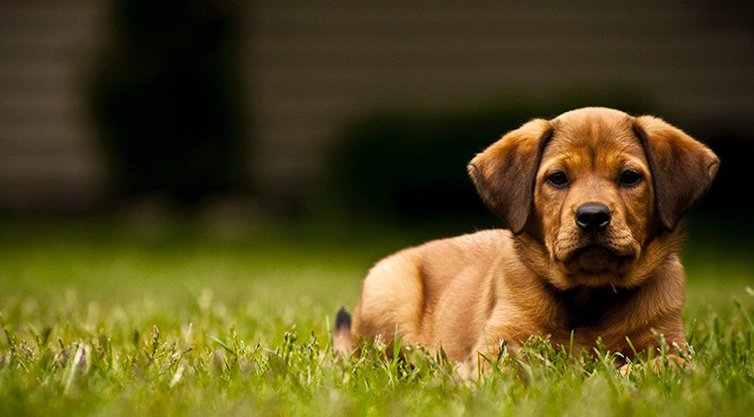Signs of a Happy Dog – and How to Know when your Dog is Unhappy
When you arrive home to yips of excitement, endless licks and rolled-over requests for tummy rubs, it’s clear that your dog is happy. These are obvious signs of a happy pup that are communicated through behaviour, body language and even physical health – even though Fido can’t verbally tell you. But have you ever considered that a wagging tail may not be quite enough to confirm a content canine? If you want to know how to tell if your dog is happy, learning the signs of a happy dog – as well as the signs of an unhappy dog – is a great start.
DOG HEALTH

Posted by bravectosouthafrica – 18 March 2021
Body language of a happy dog
Each dog has a unique personality and temperament. It’s also possible for dogs of the same breed to be completely different in terms of personality and even body type and shape. It is advisable to use cues from body language rather than breed specifics to assess if your dog is happy or not.
A dog that appears comfortable or at ease is happy. A soft, sometimes partially-open mouth and relaxed ears (not alert or pulled back) are some signs of comfort. His posture is also an indicator – a happy dog will be relaxed with his head raised and his tail at ease. He may even hold his head high as a sign of ease.
The body posture also has telltale signs of happiness. A wagging tail is not necessarily a true indicator. The dog’s body should be loose, not stiff when his tail is wagged as a stiff body can be a sign of alertness or nervousness. Other postural signs of happiness including rolling over for a tummy rub or lowering his chest to the floor in an invitation to play. Excited barking is a clear sign of a joyful pup.
Your dog’s reaction to touch will also reveal his mood. Leaning in to your body or hand for a stroke shows contentment. This relaxed behaviour is a clear happy-factor.

Behaviours of a happy dog
While there are common behaviours of happy dogs, your pup’s age, breed and health can influence how your dog displays these behaviours. Destructiveness, for example, can be a sign of stress or anxiety that may need to be addressed by a vet or behaviourist. A happy dog is content and will not dig or damage property – other than the odd delicious shoe, of course.
Appetite is a common indicator as to your dog’s physical and emotional wellbeing. A healthy appetite shows that your dog is content while changes in appetite could be a sign of potential illness or unhappiness.
Likewise, their motivation to play or go for a walk is a good sign. Most (if not all) dogs love these activities and a lack of interest in them could be an indication that Fluffy is in pain or not well.
Happy dogs give excited reactions when their humans come home – a factor that certainly affects our own happiness.
How do I know if my dog is unhappy?
Indicators like body language and behaviour can show you how happy your dog is but these factors can also be used to determine if your dog isn’t happy. The following factors could be signs that your pup is unhappy or unwell:
- Tucked or low tail. A tucked or lowered tail can indicate stress or unhappiness. Also take note of how he is wagging his tail – a wagging tail with a rigid body could be an indicator of insecurity or fear.
- Tense body. A worried dog will appear so. He may shrink away from human contact, hold her head low or avoid eye-contact altogether. If your dog reacts stiffly to touch, it usually means she feels uncomfortable.
- Ears held back. Pinned ears that lie flat against the head could show stress or anxiety.
- Submissive behaviour. Rolling over can be a sign of a happy dog but if the dog seems uncomfortable doing it and appears stiff or still, he may be anxious. Yawning and excessive lip licking can also be signs of nervousness.
- Hiding away. If your dog is hiding behind you or other objects, it is an indication that he is stressed or scared. Allow the dog to hide to comfort them.
- Raised hackles. If the hair on the back of the dog’s neck is raised this indicates fear, anger or aggression.
How can I make sure my dog remains happy?
Remember that if a dog’s physical and emotional needs are met, they will be happy. A healthy dog is a happy dog.
Make sure you keep up regular vet checks and vaccinations to maintain physical health. Consistent pest protection is another way to maintain your dog’s happiness as infestations are proven to cause stress and related physical conditions. Regular use of prevention treatments such as Bravecto® will ensure your dog never suffers the harassment of ticks, fleas and mites.
Dogs are also comforted by routine. Feeding them at more or less the same time every day is one way to create routine which could also include walks or scheduled play time.
Dogs also need exercise and mental stimulation which they can achieve through walks, games or even just chasing the ball outside. Don’t forget plenty of love and affection in the form of praise. Good pet parent!
Something you may not have considered is the impact your health and happiness has on your dog’s. Dogs are proven to sense their owners physical and emotional states so the healthier and more content you are, the happier your dog will be too!
If you are concerned that your dog is displaying any of the unhappy-factors above, consult your veterinarian. A grumpy mood can be a sign of an underlying physical condition that can be addressed to get your pup on the walkies to happiness again.
Sources:
https://www.rover.com/blog/is-my-dog-happy/

Subscribe to our Newsletter
Get to know your furry friend better! Sign up for all things dog- or cat-related.
The Hairy Facts about the dreaded hairball
12 April 2021
Help! My dog’s barking mad! Volume 2
12 April 2021
Your Itchy, Scratchy Cat – All About Cat Skin Problems
12 April 2021
The Dog’s Diet: A Bone of contention?
01 April 2021
Mango Fly Worms: How to Spot and Eliminate them
Posted on November 28,2019
Managing Mange And Mites In Your Dog
Posted on June 11,2018
Why Do Cats Purr and How? Learn What Your Cat Is Saying
Posted on October 14,2020
How to Get Rid of Ear Mites in Dogs
Posted on November 06,2019









